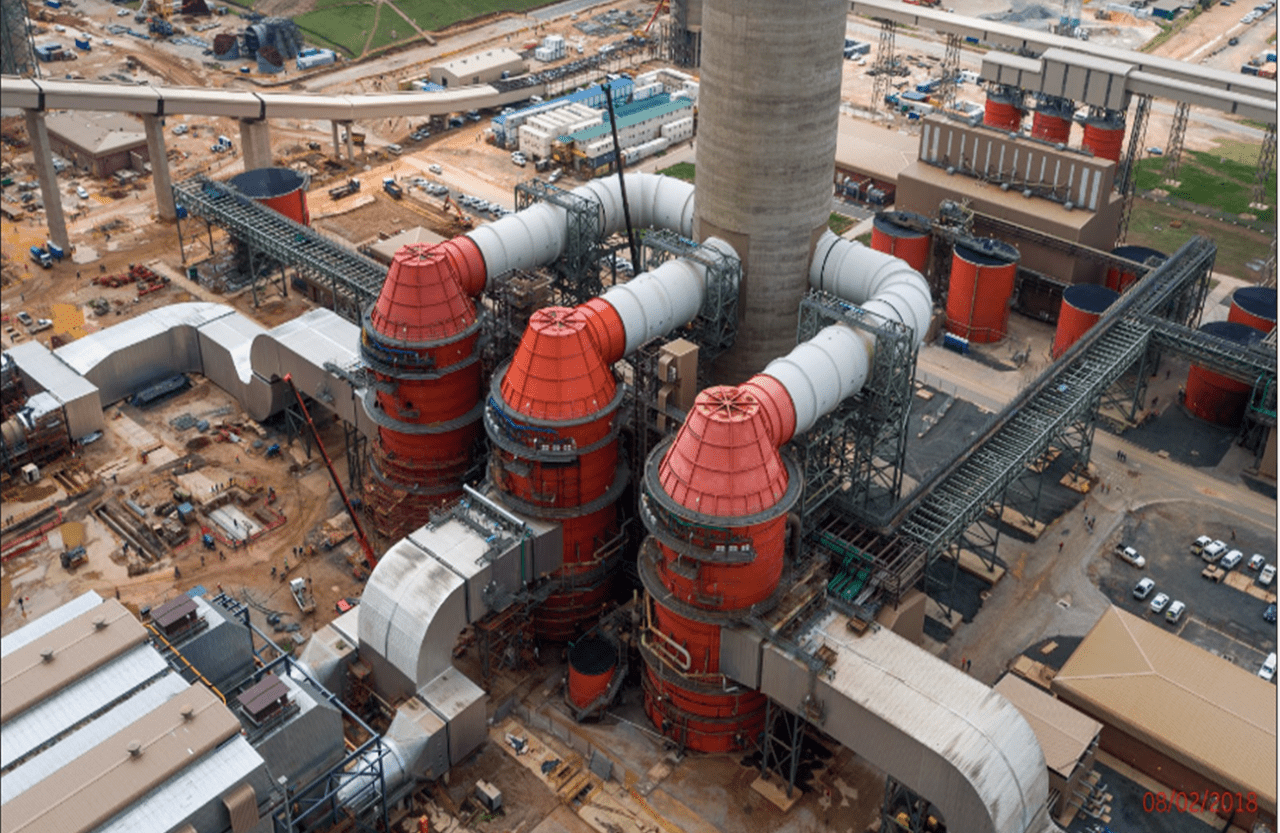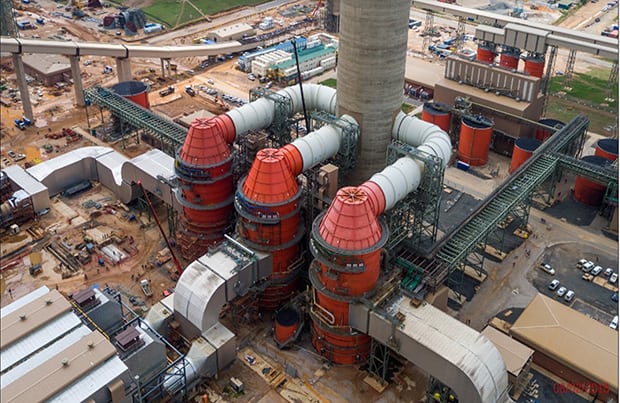Chimney Failure Takes Out Unit at Kusile, One of World’s Biggest Coal Plants
Credit to Author: Sonal Patel| Date: Thu, 03 Nov 2022 19:08:37 +0000

A severe failure on a duct exiting the sulfur dioxide absorber at Unit 1 of Eskom’s massive coal-fired 4.8-GW Kusile power plant, which is under construction in Mpumalanga province, South Africa, has shuttered the 800-MW unit and delayed Unit 2’s return to service.
Eskom on Nov. 2 announced the section of the Kusile 1 flue gas duct failed in two places: on the horizontal rubber expansion joint, as well as the compensator, which is a bend in the duct designed to direct flue gas up the chimney and allows for thermal expansion of the chimney.
“The failed section of the Unit 1 flue gas duct is located inside the flue chimney. The ducts are made from steel sections welded together and surrounded by a windshield, which is made of reinforced concrete that also houses the Unit 2 and Unit 3 flue gas ducts,” the South African state-owned utility said.
The damage occurred on Oct. 23 while the unit was in forced shutdown for flue gas desulfurization (FGD) recirculating pump repairs. For now, Eskom expects the unit may remain offline “for a few months,” though the exact duration will become clearer in a few weeks.
Investigations and assessments are in progress to establish the cause of failure and to ascertain the extent of the damage, as well as the recovery scope of work, Eskom said. The utility is in consultation with “various specialist stakeholders,” including the original equipment manufacturer (OEM), to determine how to restore the plant as quickly as possible.
Out of precaution, Eskom also delayed the return of service of Unit 2. Unit 3 continues to run at a stable load. Unit 4, whose FGD duct is housed on a separate flue chimney, is currently generating full load to the national grid.
Eskom’s fleet of coal-fired power stations is, on average, over 40 years old, and the utility acknowledges their performance is deteriorating. While the company in 2007 set out to build Kusile, an ultra-supercritical coal plant near eMalahleni in Mpumalanga, and another giant plant, the 4.8-GW supercritical Medupi plant in Lephalale, to mitigate an energy crisis, both projects have experienced long delays and massive cost overruns owing to numerous design flaws. “During the subsequent years, power shortages forced Eskom to delay necessary maintenance and run plants harder than their design specification. The neglect of maintenance has created a vicious cycle of deteriorating performance,” the company said in July.
The urgency to bring the units online—and keep them online—has been exacerbated by a pandemic recovery demand surge. Eskom says it has grappled with a shortfall of up to 6 GW of generation capacity. “When there are unplanned outages due to failures at one or more power stations, load shedding is necessary to protect the grid and prevent a blackout,” it says.
The final unit at Medupi was brought online in August 2021. Kusile 1 began commercial operations in 2017. Eskom is now working on bringing two remaining units at Kusile—Unit 5 and 6—online by June 2023 and November 2023. Kusile is South Africa’s largest construction project and will be the world’s fourth-largest coal plant at completion.

Medupi, notably, uses direct dry-cooling systems, owing to water scarcity in the Lephalale area, and is the largest dry-cooled power station in the world. Eskom is meanwhile outfitting Kusile with wet flue gas desulphurization (WFGD)—a newer technology used to remove oxides of sulfur, such as sulfur dioxide, from exhaust flue gases—as an atmospheric emission abatement technology. Eskom chose the technology because it is “in line with current international practice, to ensure compliance with air quality standards, making it more environmentally friendly.” Kusile is the first power station in Africa to use WFGD technology.
GE’s Steam Power business completed tests for the performance of the WFGD at Kusile 1 in April 2018. GE’s scope in Kusile comprised the engineering, procurement and construction (EPC) of six turbine islands, air-cooled condensers, and the WFGD plant. GE said that during its performance tests, Kusile’s WFGD plant exceeded original performance commitments as it achieved a 93% removal efficiency rate.
—Sonal Patel is a POWER senior associate editor (@sonalcpatel, @POWERmagazine).
The post Chimney Failure Takes Out Unit at Kusile, One of World’s Biggest Coal Plants appeared first on POWER Magazine.